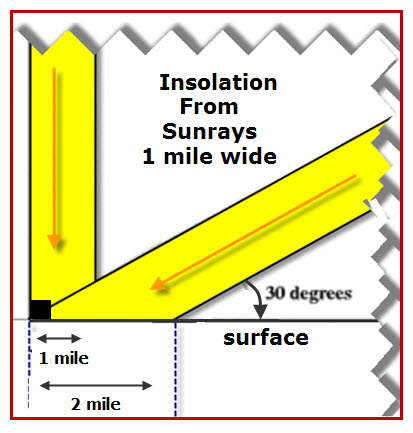Insolation is a measure of solar radiation received on a surface area in a given time period.
Some of the insolation is absorbed by the material it strikes, while some of the insolation is reflected.
In the diagram, each sun-ray is 1 mile wide. One sun-ray is perpendicular (90 degrees) to the surface it strikes. The other sun-ray strikes the same surface at a 30° angle.
If the diagram were drawn to scale, the solar energy of the angled sun-ray would be spread over twice as much surface than that of the vertical sun-ray.
Advanced
The insolation is reduced in proportion to the sine of the angle between the surface and the rays of sunlight.
sine of a 30° angle is 1/2
sine of a 90° angle is 1
Assuming that each sun-ray has the same amount of energy, how does the angle that the sun-ray strikes a surface affect the insolation received by the surface?
The solar energy from the angled sun-ray is spread over twice as much area. It is much like spreading icing over a small cake, or using the same amount of icing and spreading it over a cake twice as large. The larger cake has icing but it is very thin (1/2 as thick).
